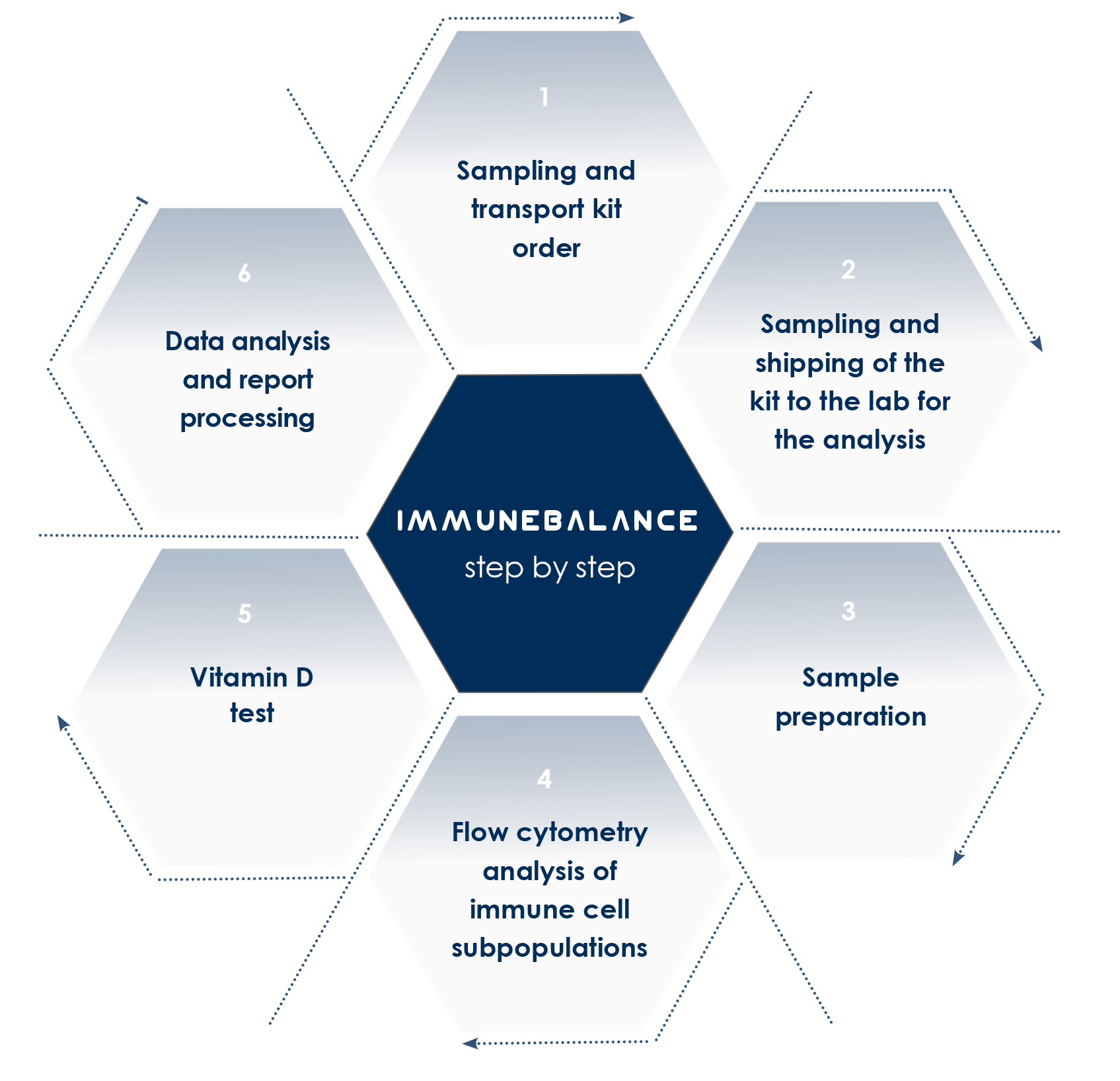Human health is continually tested by external factors such as trauma, biological agents, and chemicals. The immune system helps to counteract these threats, but the passing of the years can compromise its functioning.
The slow decline of the organism’s defenses begins much earlier than one might think. Promoting the balance of the immune system, restoring, if necessary, an anti-inflammatory profile, helps to counteract the onset of degenerative, inflammatory, and cancerous diseases typically associated with advancing age.
IMMUNEBALANCE is the Bioscience Institute test that allows you to capture the signs of aging of the immune defenses at any age, even when you are in apparently good health, for an active prevention of health problems aggravated by the passing of the years.





